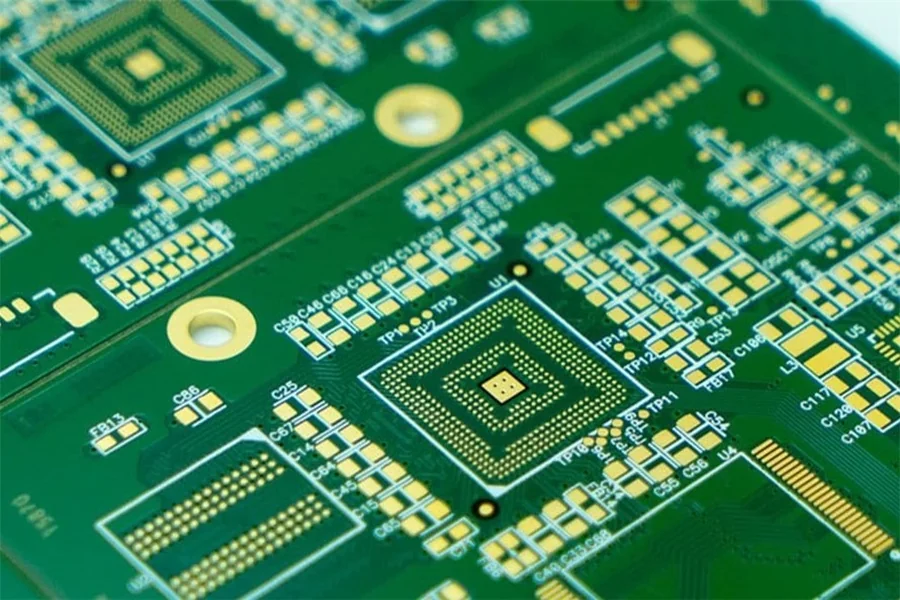In the ever-evolving world of electronics, compact design, high functionality, and reliable performance are crucial. HDI PCB, short for High-Density Interconnect Printed Circuit Board, is one of the key technologies driving this transformation. These boards allow electronic devices to be smaller, lighter, and more efficient without compromising functionality. By integrating more components in a smaller area, HDI PCB technology supports everything from smartphones and tablets to medical implants, military equipment, and aerospace systems.
An HDI PCB is characterized by its fine lines and spaces, smaller vias, higher connection pad density, and advanced multilayer construction. Unlike standard PCBs, HDI boards utilize techniques such as laser-drilled microvias, stacked and staggered vias, and sequential lamination. These innovations enable more complex routing in limited space and improve the electrical performance of high-speed and high-frequency circuits.
Advantages of HDI PCB in Modern Electronics
The biggest advantage of HDI PCB technology lies in its ability to increase the density of components and interconnections. With today’s demands for compact, high-performance devices, the ability to fit more circuitry into less space is invaluable. HDI boards allow designers to use finer pitch components such as Ball Grid Arrays (BGAs), Chip Scale Packages (CSPs), and other high pin count devices.
HDI PCBs reduce signal loss and improve signal integrity thanks to shorter trace lengths and optimized routing. This is essential for high-speed data transfer applications in industries like telecommunications, networking, and computing. Moreover, the use of microvias and buried vias helps eliminate the need for through-holes that pass through the entire board, thus freeing up space and enhancing layout flexibility.
Another notable benefit is improved thermal performance. With better heat dissipation paths and efficient design, HDI PCBs support high-power components while maintaining safe operating temperatures. These boards are also more reliable in terms of mechanical performance, as their smaller size and tighter design help reduce the risk of warping and failure.
HDI PCB Structures and Technologies
There are several types of HDI PCB stack-ups based on the complexity and number of layers. Common types include 1+N+1 (one microvia layer on each side of a core), 2+N+2, and even more advanced multilayer constructions. The “N” represents the number of layers in the core, while the numbers on either side indicate the HDI layers added through sequential lamination.
These sequential build-up processes are at the core of HDI PCB technology. Each lamination step allows for laser drilling and copper plating of microvias, creating precise interlayer connections that would be impossible with traditional manufacturing techniques. These microvias are typically only 0.1 mm or smaller in diameter, enabling fine-pitch interconnects required for modern ICs.
Advanced design features such as via-in-pad technology, copper-filled vias, and blind/buried vias also contribute to the density and performance of HDI PCBs. These design choices minimize inductance and enhance signal transmission—critical for applications like 5G, IoT, and wearable electronics.
Applications of HDI PCB Across Industries
HDI PCBs are found in nearly every sector where performance, miniaturization, and high-speed capabilities are needed. In consumer electronics, they are used in smartphones, tablets, laptops, smartwatches, and wireless earbuds. These devices require ultra-thin, compact PCBs with high functionality, making HDI an ideal solution.
In the medical field, HDI technology powers critical devices such as hearing aids, pacemakers, imaging systems, and portable monitors. The reliability and size advantages of HDI PCBs make them well-suited for lifesaving medical equipment that must be both compact and durable.
The aerospace and defense sectors also rely heavily on HDI boards. From navigation systems and sensors to avionics and satellites, HDI PCBs offer the robustness and high-speed performance required in mission-critical applications. Their ability to perform in extreme temperatures and under mechanical stress adds another layer of confidence.
In the automotive industry, HDI PCBs support the rise of advanced driver-assistance systems (ADAS), infotainment platforms, and electric vehicle power management. These systems depend on high-speed communication, compact layouts, and reliable thermal management—traits HDI PCBs provide.
Design and Fabrication Challenges
While HDI PCB offers significant advantages, its design and manufacturing are more complex than conventional PCBs. Designers must work within tight tolerances and manage signal integrity challenges. Tools like high-end EDA (Electronic Design Automation) software are essential for routing, stack-up planning, and via design.
From a manufacturing perspective, the laser drilling process, copper plating of microvias, and multiple lamination cycles require precise control and specialized equipment. Even minor defects in via formation or alignment can affect board performance or yield. As such, choosing a fabrication partner with expertise in HDI technology is critical for success.
Inspection and testing are also more rigorous. Techniques like Automated Optical Inspection (AOI), X-ray inspection, and electrical testing ensure the reliability and performance of the final product. Quality standards such as IPC-6012 and IPC-2226 govern HDI board design and manufacturing processes to ensure consistent results.
Choose a Trusted HDI PCB Manufacturer for Quality and Precision
To fully leverage the benefits of HDI PCB technology, it’s essential to partner with a reliable hdi pcb manufacturer that understands the intricacies of high-density designs. From advanced materials and stack-up planning to laser via drilling and multilayer lamination, a specialized manufacturer ensures that every board meets exacting industry standards. If you’re looking for a supplier capable of delivering precision, reliability, and scalability for your next high-tech project, consider working with a trusted HDI PCB manufacturing expert.


